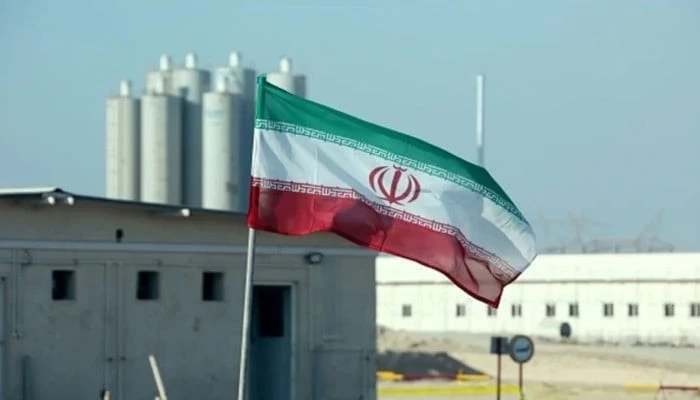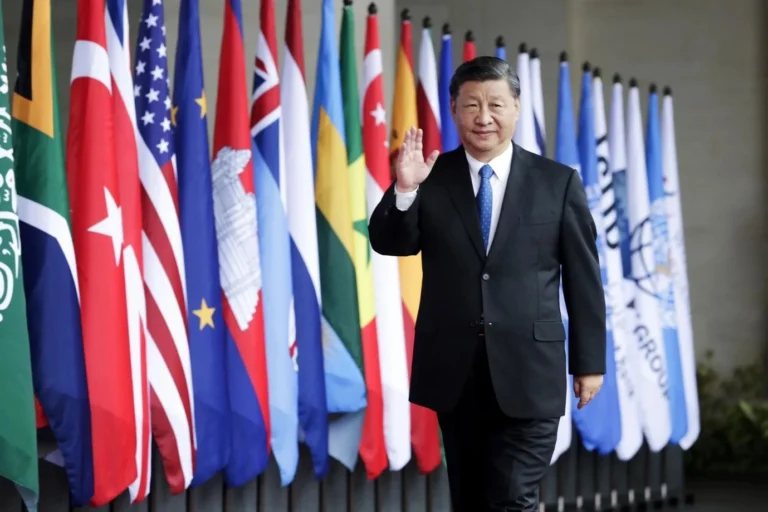The BJP’s Sinister Agenda Against Urdu in Occupied Jammu & Kashmir.

Of late, Urdu has once again become a disputed matter in Indian-occupied Jammu and Kashmir. This time, the Bharatiya Janata Party (BJP) has objected to a recruitment notice for tehsildar (revenue officer) which will have Urdu as a language component. The logic by the BJP, in arguing against establishing Urdu as compulsory in Jammu, is that, based on the vernacular or the dominant language, the population in Jammu primarily speaks Kashmiri or Hindi.
The re-naming of cities, towns and even districts is not simply a linguistic issue, it is a broader political and ideological agenda involving the attempted erasure of the Muslim identity, heritage and culture of occupied Jammu & Kashmir. It forms part of a deliberate and systematic plan to erase the Muslim identity, heritage and culture of Muslims in the occupied state of Jammu & Kashmir. Prior to the partition of the Subcontinent, Urdu language was unitedly and commonly possessed language shared across the Subcontinent. In British India, Urdu was an administrative language, an educational language, and judicial language. In Jammu and Kashmir, Urdu became the state language in 1889 when Maharaja Pratap Singh, replaced the use of Persian for official purposes.
Urdu cannot and must not be a religious or sect language. It was born in the alleyways of Delhi, Lucknow, the scholarly alleys of Lahore, and the valleys of Kashmir. Urdu was nourished and has grown up. It has grown up because literary luminaries such as Ghalib, Iqbal, Mir, Faiz, Josh, Majrooh, Krishan Chander, and Prem Chand – i.e. all the torchbearers of Urdu – came from different religious backgrounds/geographic regions of South Asia. Urdu came from a mix of: Persian, Hindi and other regional language variations, and was for centuries the glue that held South Asia together.
The promotion of Urdu in Jammu & Kashmir is a matter of legacy or culture but also a constituent of the language’s civil service, legal, and educational framework. Historical records feature contemporary remnants of Urdu in old government files, court decisions, land records or even public signage.Many government departments continue to use the language today.
When the BJP raises its voice against Urdu, it’s not simply targeting a language, it’s attacking Muslim heritage under a political agenda. This is the same ideology that first targeted Kashmir’s semi-autonomous status, then its Muslim majority character, and now aims to erase its language, literature, and cultural identity.
The BJP’s argument that Urdu is not widely spoken in Jammu ignores the fact that Jammu & Kashmir is a composite state with multiple ethnicities and languages. If majority use alone were the benchmark, then Hindi should also be removed from South India, where it’s scarcely spoken.However, BJP’s vision is not about linguistic pluralism, it is about majoritarian supremacy.
Omar Abdullah was within his rights to ask why anyone would oppose making Urdu compulsory since it is an official language of Jammu & Kashmir. A public officer unfamiliar with Urdu would not be able to connect to the public, nor would he be able to comprehend official records. The BJP’s objections seem trivial and inane, particularly when the party boasts of “regional pride” in the event local languages become compulsory in Assam or Bengal, yet it is “discrimination” when it is Kashmir. The double standards evident with respect to language documents that the real question it is not about language, it is about identity.
A Campaign to Erase Muslim Heritage
It’s not a new policy to make Urdu mandatory in Jammu & Kashmir. This is a tradition that began with the colonial practices and is still tied to Kashmiri society. The BJP’s opposition is rooted in a larger strategy to systematically wipe out all Muslim heritage, whether that is historic mosques, madrasas, Islamic traditions, or the Urdu language.It’s the same mindset that demolished the Babri Masjid, claims mosques in Gyanvapi and Mathura, and now targets the language of Kashmir. This is not just a matter of land, politics, or power, it’s a campaign for control over hearts, minds, and souls.
India’s constitution acknowledges linguistic and cultural diversity. All of these languages; Kashmiri, Dogri, Gojri, Pahari, and Urdu are spoken in Jammu & Kashmir. Shouldn’t promoting either one of them NOT be called “bias”? Furthermore, if the intent is to make Urdu mandatory, it places minority communities closer to realizing rights, not necessarily discriminating against other groups. The government cannot claim to be intent on equality if it protects regionally recognized languages, rather than politicizing languages.
It would be a colossal mistake to view the current anti-Urdu campaign in Kashmir, in less than optimism of controversy of language.It is an assault on India’s secular identity, its historical harmony, and the rights of its minorities. Urdu is the shared identity of millions across South Asia; attacking it is an attempt to erase a cultural legacy rooted in Hindu-Muslim unity and civilizational coexistence. The time has come for India’s intellectuals, writers, scholars, politicians, and journalists to stand up in support of Urdu and expose the political campaign aimed not just at the language of Kashmir, but its entire culture, history, and Muslim identity. Urdu is the soul of the subcontinent, any attempt to erase it is an attack on the foundation of humanity.
The BJP’s narrative against Urdu is not a spontaneous reaction, it is part of an organized propaganda campaign that seeks to declare Hindi as the “national language” while portraying other languages as unnecessary or even “enemy languages.” Since Urdu is perceived as linked to Muslims, it has become a “soft target” for the BJP and its supporters. As a result, a psychological war is being waged against Urdu across Gujarat, Uttar Pradesh, Maharashtra, Delhi, and now Kashmir.
Let’s not forget، in 2017, Urdu was labelled a “Pakistani language” in Uttar Pradesh, and was removed from several government departments. Urdu teachers were transferred from schools, and Urdu newspapers were denied government advertisements. This was all part of a deliberate campaign to give Urdu a sectarian identity and incite hatred against it among the general Hindu population.
Historically and currently, Urdu has been an indispensable conduit between the people and the government in Kashmir. When India occupied Jammu & Kashmir in 1947, Urdu was the official language, and it continued as the official language even through Article 370 of the Indian Constitution. Up to 2020, everything from the state assembly’s legislative provisions, the courts’ judgments, curriculum in the schools to police records, daily activity and operations was conducted in Urdu.
A person wanting to find out Kashmir’s history, land records, legal documents to local laws – cannot do so, unless they know Urdu.How can an officer in a crucial administrative role like tehsildar serve the people if they don’t know the language?
BJP’s stance against Urdu contradicts its own slogans about national unity and integration. On one hand, it chants “One India, Great India,” but on the other, it campaigns to reduce Urdu، speaking citizens to second class status. If Indian society truly values linguistic harmony, Urdu should be afforded the same respect as any other regional language.
Languages are meant to build bridges but when used as political fuel, they become walls. Tragically, BJP is building such a wall through language, weakening the Muslim-majority identity of occupied Kashmir.
The end result of BJP’s anti-Urdu policy will not be limited to erasing Kashmir’s identity, it will shake the very foundations of India’s linguistic, cultural, and democratic fabric. When a community’s language is suppressed, it either resists or loses its identity. The political and cultural consciousness that the people of Kashmir have developed over the last seven decades was made possible through Urdu. This language is both the symbol and foundation of their resistance. If Urdu is forcibly removed today, then tomorrow languages like Kashmiri, Gojri, Pahari, and even Hindi—could face the same fate. This “linguistic cleansing” will not only impact one community, but the entire civilisation.
Effects on Education, Literature, and Employment
The greatest impact of this campaign against Urdu will be on the poor and middle class youth who study in Urdu and aspire to secure government jobs.If Urdu is stripped of its official status, the qualifications of millions of students being awarded in that language will be meaningless. Therefore, opportunities in education, literature, work and social development will be further reduced.
And the same youth who are today being encouraged to join the “national mainstream”, may tomorrow rebel against a system that refuses to acknowledge their language, identity, and place in society.
Urdu is not just a language; it is the name of a civilization. It does not belong only to Kashmir or Muslims, but to the entire subcontinent. The BJP may remove it from official ads and school curricula, but it cannot erase it from people’s hearts. The flowing springs in Kashmir’s valleys, the verses of its poets, the textbooks of its schools, and the old files in its courts will continue to testify to the presence of Urdu.
An attack on Urdu is, in truth, an attack on Kashmir’s identity. This war on language is a thinly veiled effort to crush culture, history, and the spirit of resistance. But as old as this conspiracy may be, the roots of Urdu are even older, growing stronger with every assault. You can remove Urdu, but you cannot erase it.












